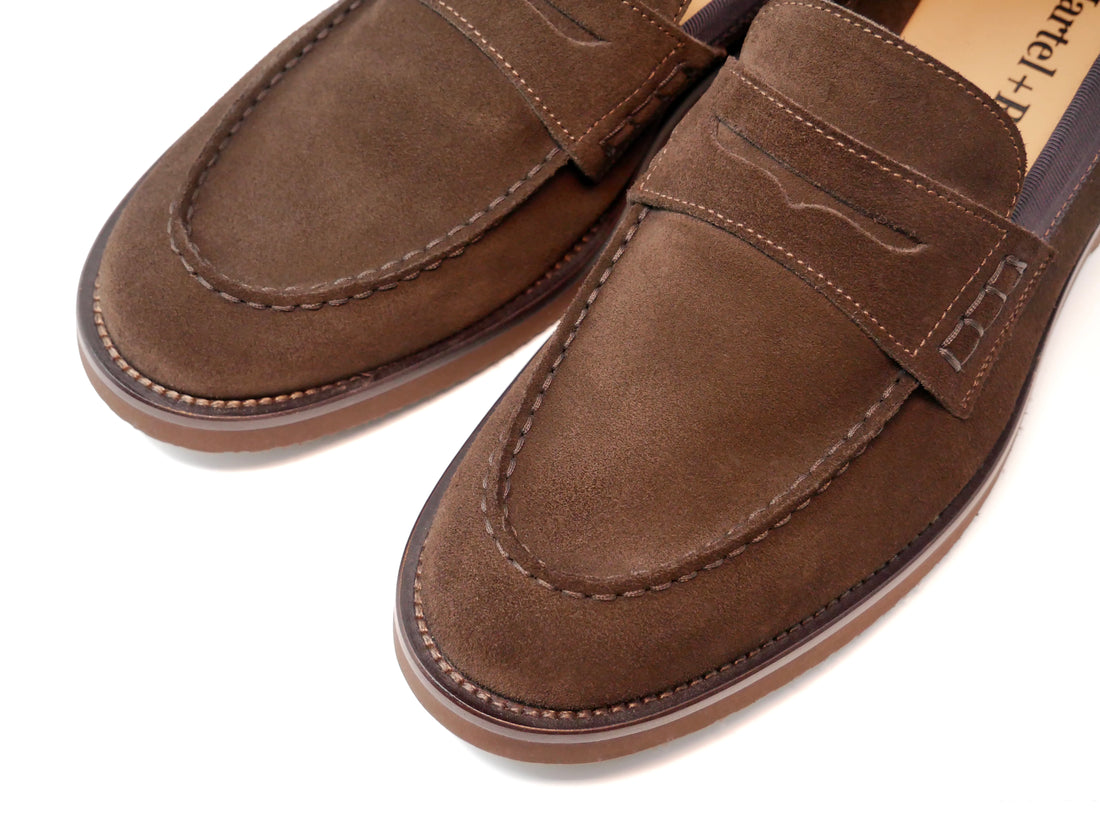
I’ll Be Buried in a Pair of Loafers
Share
I love a good loafer; always have, always will.
I grew up wearing every kind of loafer in the 80’s – especially G. H. Bass Boat Shoes and classic Weejuns. The thing about a good pair of loafers is that they mould to your foot shape over time and become like second skin for your feet – not to mention the easy-on, easy-to-kick-off nature of a slip-on that every teenager can appreciate.
What makes a good loafer? It’s the moccasin construction.
Now, not all loafers are genuine moccasin construction and even fewer (these days) are handsewn in the traditional way. Some slip-on styles may look like a moccasin, but they are actually ‘lasted’ constructions with decorative moccasin stitching – which may look nice – but defeats the purpose.
A moccasin construction – where the leather wraps the foot from the bottom-up – is about the oldest shoe construction known to man – apart from a cheeky sandal or two back in the cradle of civilisation. Some of the oldest shoes that have ever been found are made in a similar way – even if they are far from what we would now consider a modern moccasin.

The simple act of wrapping a leather animal skin from the bottom of your foot – so the sole wraps up and around your foot – is a simple and practical design. The edges of the hide are then gathered with fibre thread or leather cord to create a ruched or puckered top – closing the leather around the foot.

The word moccasin comes from the Algonquian language Powhatan – so many historians attribute the moccasin solely to native American culture; however, I would hypothesise that although the native American version has most influenced what we consider a moccasin today, this simple construction would have also been seen on palaeolithic feet in Europe, Africa and Asia over 30,000 years ago as well.
Like Louboutin trying to claim that he invented the colour red – most of the designs and techniques we see in classic footwear have all been done before and cross cultures more than we realise.
The best example of Moccasin evolution is the Bass ‘Weejun’. This iconic Penny Loafer was popularised in the 1950’s by G.H. Bass and instantly became a preppy collegiate icon. The name is short for ‘Norwegian’ as the design was inspired by mocs worn by Norwegian fisherman since the early 1800s. Those mocs had actually been based on a classic Iroquois design – so full circle back to the Native Americans and early transatlantic trade from the New world back to Europe.

But was that the only true source?
The Romans had a similarly constructed shoe called a ‘Carbatina’ that shares the bottom-up wrapping and ruched design elements. I think there is a great deal of cross pollination here.

In any case – the moccasin construction we know today creates a flexible and adaptable design that moves and moulds to your foot over time.
The hand sewing of the ‘vamp’ – or the top piece of leather that sits over your toes – to the base is made to shift and adapt to your foot. This natural movement, combined with a soft, unlined leather upper creates a magical combination of elements for footwear. When stitched in this traditional way – with two needles and an awl – the moccasin 'loafer' reaches its height of craftsmanship and organic comfort.
